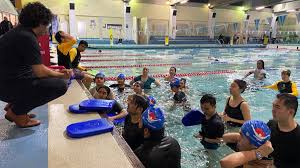Understanding What You Learn in a Water Safety Course and Why It Matters
There’s a moment, just before a child jumps into a pool for the first time, where everything hangs in the balance—confidence, competence, and caution. Whether it’s backyard swimming, beach holidays, or school excursions, water is central to Australian life. But so is water risk.
A water safety course is more than learning how to float or swim; it’s about knowing what to do when things go wrong. And Level 2 is where the basics start to become real-life tools.
What Does a Level 2 Water Safety Course Include?
Level 2 typically builds on foundational water awareness by introducing practical survival skills and safety behaviours. While Level 1 may cover comfort in the water and basic floatation, Level 2 shifts the focus to risk recognition, entry techniques, and staying safe in a variety of environments.
In a standard water safety course, learners at Level 2 often cover:
- Safe entries and exits in shallow and deeper water
- Recognising potential hazards in pools, rivers, and oceans
- Treading water for extended periods
- Basic rescues, like using a reach or throw aid
- Wearing clothes while swimming to simulate real-life scenarios
These are age-appropriate, progressive steps that are applicable not only to children but also to adults seeking confidence in and around water.
Why Level 2 Water Safety Skills Are Crucial for Australians
Australia’s drowning statistics remain sobering. According to the Royal Life Saving National Drowning Report, over 280 people drown each year in Australia—many within 10 metres of safety.
Level 2 targets the danger zone between passive comfort and active competence. It’s where confidence can sometimes outpace capability. Learners begin to encounter real scenarios—like fatigue, cold water, or unexpected currents—and practise making decisions under pressure.
By progressing through a water safety course, learners become aware of:
- The consequences of risky behaviour (e.g., diving into shallow water)
- How to identify safe swimming zones
- The role of lifeguards and signage
- Personal limits—and when to ask for help
How a Structured Water Safety Course Builds Lifelong Skills
The structure of a water safety program matters. Rather than a one-off lesson, it’s the layered, incremental approach that builds competence. Level 2 acts as a pivot point between basic familiarity and strong water survival ability.
And it’s not all physical. Critical thinking is part of the skillset. A well-designed water safety course teaches situational awareness, calm response in emergencies, and communication in rescue situations. These are life skills, just as essential as knowing how to swim.
Three links to deepen your understanding:
- water safety course for understanding structured learning
- water safety course to explore skill levels and assessments
- water safety course for enrolment information and age-appropriate guidance
Common Myths About Water Safety Training
Let’s clear a few things up:
“I know how to swim, so I don’t need a course.”
Wrong. Swimming is one skill; safety is another. A strong swimmer can still panic, misjudge depth, or overlook hazards.
“My child has had a few lessons—they’re fine now.”
Not quite. Without progressive learning, early lessons fade. A structured path, like Level 2 and beyond, reinforces learning and adapts as kids grow.
“You can learn all this on YouTube.”
Video can’t simulate fatigue, panic, or cold shock. Nor can it correct your technique or build your confidence gradually like a qualified instructor can.
Where to Start: Choosing the Right Course for Your Needs
Australia has national frameworks that guide progression through aquatic education. Whether you’re looking for school-aged programs or adult re-skilling, finding a certified provider matters. Look for centres that follow nationally recognised frameworks, use qualified instructors, and offer assessments that guide learners to the next level safely.
And while the water safety course path might start in a local pool, it opens up a wider world—safer beach visits, calm lake trips, and even the confidence to assist others when needed.
Wrap-Up: A Step That Could Save a Life
Level 2 water safety isn’t just a milestone—it’s a life-defining skill set. It’s where learners shift from simply “being in water” to understanding how to stay safe in it. Whether you’re enrolling your child or brushing up as an adult, the time spent learning these skills is a small investment for something invaluable: peace of mind.
Want to feel safer, stronger, and smarter around water? Start with the right course—and stay the course.

